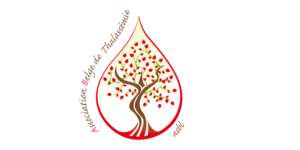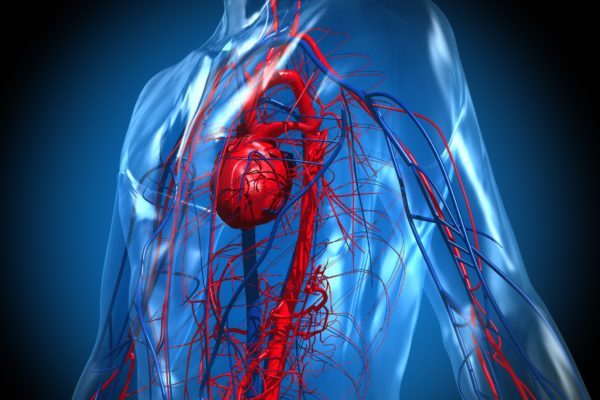
Association Belge de Thalassémie
Thalassaemia is an inherited blood disorder in which the body is unable to make adequate haemoglobin (=haemoglobinopathy). Haemoglobin is an iron-containing protein present in red blood cells. The aberrant haemoglobin is a result of a defect in the genetic material (DNA) that codes for the haemoglobin protein. Haemoglobin is responsible for the transport of oxygen from the lung to the rest of the body and carbon dioxide back to the lungs, where the carbon dioxide is exhaled. The abnormal haemoglobin in thalassemia causes deformation of the red blood cells, resulting in excessive destruction of red blood cells. This deficit in red blood cells causes anaemia.
Normal haemoglobin consists of four protein subunits: two alpha and two beta globin chains. When someone has defects in the alpha subunits of haemoglobin, they have alpha-thalassaemia, and when production of the beta globin chains are affected, it is called beta-thalassaemia. Beta-thalassaemia is more common than alpha-thalassaemia. The severity of the disorder varies.
Four genes, two of the father and two of the mother, are responsible for the production of the alpha-globin chains. The severity of the disorder is dependent on the number of defect genes.
Normally people have two genes (one of each parent) for the beta-globin chains of the haemoglobin proteins.
Other forms of thalassaemia are:
The incidence of thalassaemia worldwide is high, particularly in countries surrounding the Mediterranean Sea, Southeast Asia, North Africa, and Suriname. It is estimated that thalassemia affects approximately 4.4 of every 10,000 live births throughout the world. Alpha-thalassaemia has the highest incidence in families from Southeast Asia, India, China or the Philippines. Beta-thalassaemia is most common in people from countries surrounding the Mediterranean Sea (Greece, Italy and the Middle East), or Asian or African people. The term ‘thalassaemia’ derives from the Greek word ‘Thálassa meaning ‘sea’.
In Belgium it is estimated that there are around 100 to 200 known patients diagnosed with thalassaemia, more than half of them are children with the severe beta-thalassaemia major. Numbers have been rising over the past years due to migration. According to estimates, around 350 people are carrier of beta-thalassaemia. Severe alpha-thalassaemia is rare, in contrast to being a carrier of alpha-thalassaemia. Men and women are equally affected by thalassaemia.
The symptoms of the different types of thalassaemia vary. Some people experience only mild symptoms, while others show severe symptoms and need immediate treatment. Symptoms do not usually show up before the age of 6 months.
The most common symptoms are related to anaemia and generally mild. Symptoms of severe forms of thalassaemia (thalassaemia major) are:
Possible complications of the treatment of thalassaemia are:
Thalassaemia is an inherited blood disorder characterised by abnormal haemoglobin production. The cause is a defect in the gene coding for a piece of the haemoglobin protein. A gene is a small part of a chromosome, the material that carries the genetic information. The haaemoglobin protein consists of alpha-globin and beta-globin chains. In people with thalassaemia, a defect in one of these chains causes an aberrant haemoglobin protein that does not function properly. The severity of the disease is determined by the degree of aberrant haemoglobin. Moreover, other individual factors also affect the severity.
When both parents are carrier of the disease, there is a 25% chance that their child will have thalassaemia, 50% chance that the child will be a carrier, and 25% chance that their child is unaffected.
Thalassaemia and thalassaemia trait can be diagnosed via blood tests (complete blood count, DNA testing). Sometimes additional research is necessary to determine the exact type of thalassaemia. Sometimes testing of family members is helpful.
During pregnancy the unborn child can be tested through prenatal genetic screening. Via the extensive NIPT test MG-NIPD (monogenic non-invasive prenatal diagnostics) link Hubrecht Insitute the DNA of the baby can be screened without the need for an amniocentesis (amniotic fluid test).
The test results of the parents give an indication of the likelihood and type of thalassemia their child may have. Early diagnosis means adequate treatment can start right after birth. Since 2017, newborns in the Netherlands are screened for alpha- and beta-thalassaemia (trait) via the heel prick test.
A diagnosis of thalassaemia is made based on the following examinations:
The current treatment focuses on the prevention, relief and treatment of complications of thalassaemia, such as pain. Patients with severe thalassaemia, such as HBH and beta-thalassaemia major need frequent blood transfusions, which is accompanied by a risk of a harmful increase in iron levels (iron overload). Deferrization (iron chelation therapy) is a method to discard iron from the body in order to prevent iron overload.
In Italy, patients can undergo a bone marrow transplantation at very young age. The results of this treatment are very convincing. Expertise in this treatment area are also present in the Netherlands, and therefore, for children with severe thalassaemia, it is recommended to search for a suitable donor to be able to perform such transplantations.
Treatment of severe thalassaemia mainly consists of:
In addition to these treatment options, gene therapy and targeted therapy are active areas of research that may offer new treatment strategies for patients with thalassaemia in the future.





